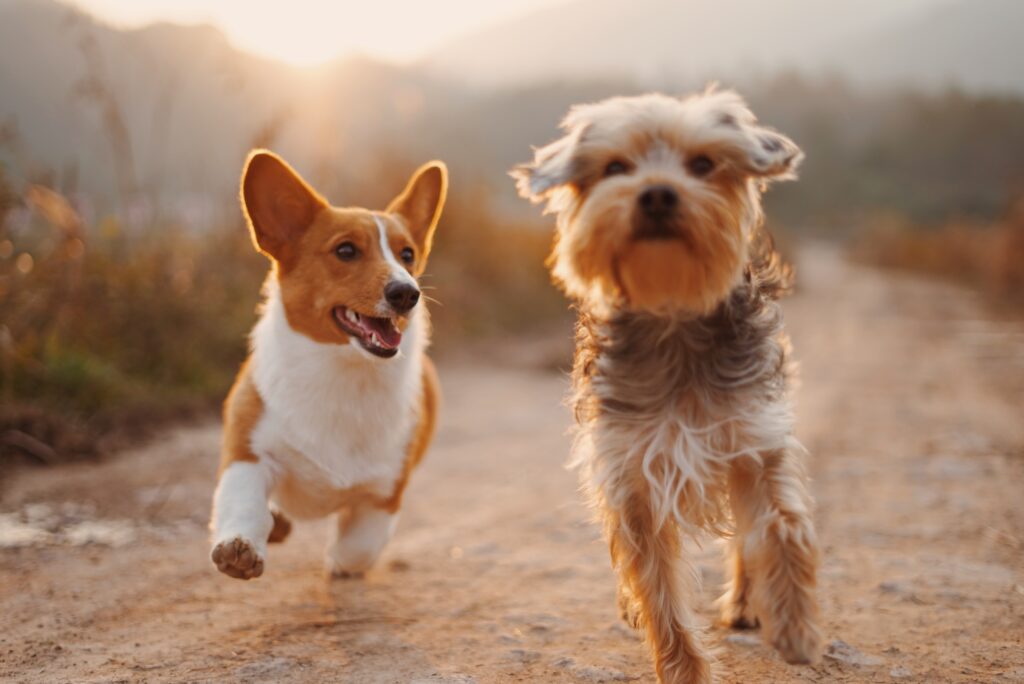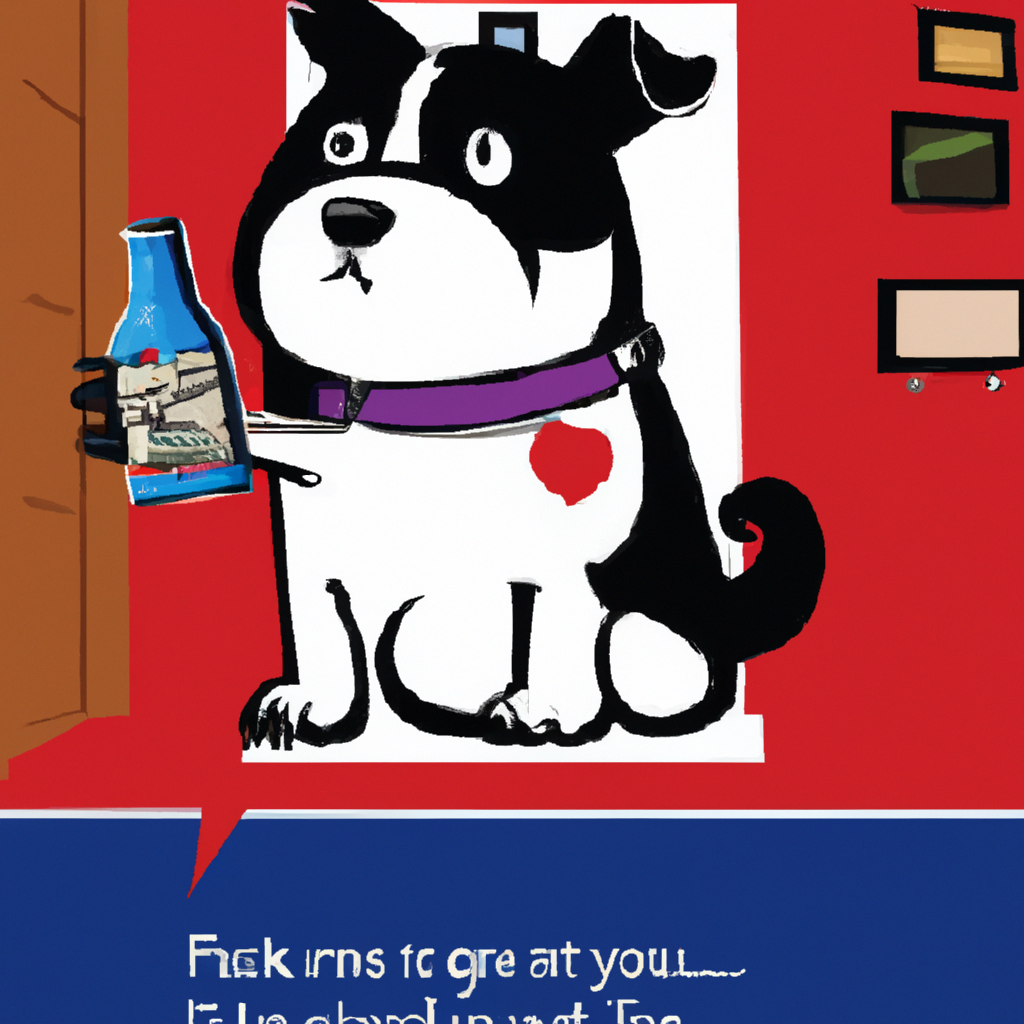Imagine walking into a restaurant and seeing friendly faces, delicious food, and…pets? That’s right! Pet friendly restaurants are becoming increasingly popular, but have you ever wondered how they ensure the safety and comfort of all their guests, both human and furry? From designated pet-friendly areas to strict cleanliness standards, these restaurants go above and beyond to create a welcoming environment for everyone to enjoy. So, whether you’re a pet owner looking for a place to dine with your four-legged friend or simply curious about how these establishments cater to all guests, let’s take a closer look.

This image is property of images.unsplash.com.
1. Designated pet-friendly areas
Restricting pets to specific areas
Pet-friendly restaurants often designate specific areas within their establishment where pets are allowed. This ensures that pet owners and non-pet owners can coexist comfortably in the same space. By restricting pets to certain sections of the restaurant, it minimizes any potential disruptions or discomfort for guests who may have allergies or are simply not fond of animals.
Separate entrances for pet owners
To further enhance the safety and comfort of all guests, pet-friendly restaurants may have separate entrances for pet owners. This allows pet owners to easily enter and exit the designated areas without disturbing other guests who may not be comfortable around animals. It also helps in managing the flow of traffic and maintaining a calm and controlled environment within the restaurant.
Providing outdoor seating options
Outdoor seating areas are commonly provided in pet-friendly restaurants to cater to both pet owners and their furry companions. This allows pets to enjoy the fresh air and provides ample space for them to move around freely. Outdoor seating also prevents any potential accidents or spills from affecting the indoor dining experience for other guests, ensuring a comfortable and enjoyable dining experience for everyone.
2. Clear pet-friendly policies
Displaying and communicating policies
Pet-friendly restaurants must have clear and visible pet-friendly policies that are displayed prominently throughout the establishment. This includes informing guests about the designated areas for pets, any specific rules or restrictions, and any additional guidelines for pet behavior. By clearly communicating these policies, both pet owners and non-pet owners are aware of the expectations and can navigate the dining experience with ease.
Setting guidelines for pet behavior
To ensure the safety and comfort of all guests, pet-friendly restaurants establish guidelines for pet behavior. This may include keeping pets on a leash at all times, discouraging excessive barking or jumping, and ensuring that pets do not disturb other guests. These guidelines help create a harmonious environment where pets can coexist with other guests without causing any disruptions or discomfort.
Establishing size and breed restrictions
To avoid any potential safety concerns, pet-friendly restaurants may establish size and breed restrictions for pets. This ensures that only well-behaved and manageable pets are allowed into the establishment. By setting these restrictions, restaurants can effectively manage the behavior and temperament of the pets present, preventing any unfortunate incidents and maintaining a safe and comfortable environment for all guests.
3. Ensuring cleanliness and hygiene
Regularly cleaning and sanitizing pet-friendly areas
One of the top priorities for pet-friendly restaurants is maintaining cleanliness and hygiene in the designated pet-friendly areas. Regular cleaning and sanitization should be conducted to ensure that the areas are free from any pet-related mess or odors. This includes removing any potential allergens, such as pet hair, and disinfecting surfaces to prevent the spread of bacteria or germs. By keeping these areas clean, both pet owners and non-pet owners can feel confident in the overall cleanliness of the restaurant.
Providing waste disposal options
To prevent any inconvenience or unsightly mess, pet-friendly restaurants should provide waste disposal options for pet owners. This may include designated areas for pet waste disposal, such as provided poop bags and trash bins. Clear signage should be displayed to remind pet owners of their responsibility to clean up after their pets. By offering these waste disposal options, restaurants can maintain a clean and pleasant environment for all guests.
Avoiding cross-contamination with food preparation areas
Maintaining food safety standards is crucial for any restaurant, including pet-friendly establishments. It is essential to ensure that there is no cross-contamination between the pet-friendly areas and the food preparation areas. Separate spaces should be designated for food preparation to prevent any contact or contamination with pets or pet-related items. This helps guarantee the safety and hygiene of the food served to all guests.
4. Training staff about pet etiquette
Educating staff on pet handling
To ensure the safety of both pets and guests, staff members in pet-friendly restaurants should be adequately trained in pet handling. This includes learning how to approach and interact with pets in a calm and friendly manner. Staff members should understand the importance of respecting the boundaries of both pets and their owners and be knowledgeable about basic pet behavior and body language cues. By having well-trained staff, pet-friendly restaurants can create a positive and comfortable experience for everyone.
Sensitivity training for staff and pets
Sensitivity training is crucial to ensure that staff members are aware of and sensitive to the needs of both pets and their owners. This training helps staff members understand that not all guests may be comfortable around animals, and they should approach each situation with empathy and respect. Additionally, pets themselves may have individual preferences or sensitivities that staff members should be mindful of. By promoting a culture of sensitivity and understanding, pet-friendly restaurants can create an inclusive and welcoming environment for all guests.
Recognizing signs of stress or aggression in pets
It is important for staff members in pet-friendly restaurants to be able to recognize signs of stress or aggression in pets. This ensures the safety of both the pets and other guests. Staff members should be trained to identify behaviors such as growling, lunging, or excessive panting, which may indicate that a pet is feeling anxious or uncomfortable. By promptly addressing and diffusing any potential problematic situations, staff members can maintain a safe and calm environment for everyone.

This image is property of images.unsplash.com.
5. Providing pet amenities
Offering water bowls and treats
To ensure the comfort and well-being of pets, pet-friendly restaurants often provide amenities such as water bowls and treats. Water bowls are particularly essential, especially in outdoor seating areas, to keep pets hydrated. Treats can be a nice gesture to show appreciation for pets and their owners. These small amenities go a long way in making pets feel welcome and cared for during their dining experience.
Providing leashes or pet-friendly seating materials
Pet-friendly restaurants may consider providing leashes or pet-friendly seating materials to enhance the comfort of both pets and their owners. Leashes can be made available for pet owners who may have forgotten to bring their own or need a temporary replacement. Pet-friendly seating materials, such as cushions or blankets, can help pets feel more comfortable and relaxed during their time at the restaurant. These small gestures contribute to creating a positive and enjoyable experience for pets and their owners.
Pet-friendly restrooms or designated relief areas
To accommodate the needs of both pets and their owners, pet-friendly restaurants may consider providing pet-friendly restrooms or designated relief areas. These areas should be conveniently located and easily accessible for pet owners to attend to their pets’ needs. By offering these facilities, pet-friendly restaurants demonstrate their commitment to the comfort and well-being of both pets and their owners.
6. Addressing allergies and sensitivities
Notifying guests about potential allergens
To ensure the safety and comfort of guests with allergies, pet-friendly restaurants should notify all guests about potential allergens present in the establishment. This includes placing visible signage at the entrance or on menus, informing guests of the presence of pets or potential pet-related allergens. By providing this information upfront, guests can make an informed decision about whether to dine in the pet-friendly areas or opt for a non-pet-friendly option.
Offering allergen-free seating options
To cater to guests with severe allergies or sensitivities to pets, pet-friendly restaurants should also provide allergen-free seating options. These areas should be separate from the pet-friendly sections and thoroughly cleaned and maintained to ensure no traces of allergens are present. By offering these allergen-free seating options, pet-friendly restaurants can accommodate guests with allergies while still providing a pet-friendly environment for other guests.
Keeping pet-free and pet-friendly areas separate
Pet-friendly restaurants should have clear boundaries between pet-free and pet-friendly areas. This prevents any potential cross-contamination of allergens or discomfort for guests with allergies. By ensuring a clear separation between these areas, pet-friendly restaurants can accommodate the needs of all guests and create a comfortable and inclusive dining experience.

This image is property of images.unsplash.com.
7. Safety precautions for pets and guests
Posting pet safety guidelines
To promote the safety and well-being of both pets and guests, pet-friendly restaurants should prominently display pet safety guidelines. These guidelines should include reminders to keep pets on a leash, avoid feeding pets from the table, and respect other guests’ personal space. By posting these guidelines, pet-friendly restaurants can help educate both pet owners and non-pet owners about appropriate behavior and ensure a safe environment for all.
Ensuring secure entrance and exits
To prevent any accidental escapes or incidents, pet-friendly restaurants must have secure entrances and exits. This includes having gates or doors that are properly closed, preventing pets from entering or exiting the establishment unsupervised. By ensuring the security of the entrances and exits, pet-friendly restaurants can minimize any potential risks and maintain the safety of both pets and guests.
Monitoring pet behavior and interactions
Staff members in pet-friendly restaurants should actively monitor pet behavior and interactions to ensure the safety and comfort of all guests. This includes observing for any signs of aggression, excessive barking, or other disruptive behaviors. By being vigilant and intervening when necessary, staff members can quickly address any potential issues and maintain a peaceful and enjoyable dining atmosphere for everyone.
8. Collaborating with local animal organizations
Partnering with animal welfare groups
Pet-friendly restaurants can collaborate with local animal welfare groups to further promote responsible pet ownership and support animal-related causes. This can include partnering with shelters, rescue organizations, or advocacy groups to raise awareness and funds for their initiatives. By working together, these establishments and organizations can foster a sense of community and make a positive impact on animal welfare.
Hosting adoption events or fundraisers
To show their commitment to animal welfare, pet-friendly restaurants may host adoption events or fundraisers. These events provide an opportunity for guests to meet and interact with adoptable pets, potentially leading to successful adoptions. Fundraisers can raise much-needed funds for local animal organizations and support their ongoing efforts. By hosting these events, pet-friendly restaurants can make a meaningful contribution to the welfare of animals in their community.
Promoting responsible pet ownership
Pet-friendly restaurants can also play a role in promoting responsible pet ownership by sharing information and resources with their guests. This can include providing brochures or leaflets about pet care, local veterinary services, and the importance of spaying/neutering pets. By educating pet owners and encouraging responsible practices, pet-friendly restaurants can help foster a community of responsible and caring pet owners.

9. Customizing menus and services for pets
Providing pet-friendly menu options
To cater to pets, pet-friendly restaurants may offer dedicated pet-friendly menu options. These could include specially prepared meals or treats that are safe and enjoyable for pets. By customizing the menu, pet-friendly restaurants show their commitment to providing a memorable dining experience for both humans and their furry companions.
Offering grooming or pet care services
Some pet-friendly restaurants may go the extra mile by offering grooming or pet care services on-site or in partnership with local pet service providers. This could include grooming salons, pet spas, or even dog-walking services. By providing these additional services, pet-friendly restaurants enhance the convenience and overall experience for pet owners, allowing them to enjoy their meal knowing their pets are well taken care of.
Creating a welcoming atmosphere for pets
Above all, pet-friendly restaurants focus on creating a welcoming atmosphere for pets. This includes having a friendly and accommodating staff that greets pets with warmth and positivity. It also involves creating a relaxed and comfortable ambiance that reduces any potential stress for pets. By prioritizing the well-being and happiness of pets, pet-friendly restaurants establish themselves as go-to destinations for pet owners looking for a truly inclusive dining experience.
10. Regular evaluation and feedback
Seeking feedback from pet owners
To continually improve their pet-friendly practices, restaurants should actively seek feedback from pet owners. This can be done through surveys, comment cards, or online reviews. By listening to the experiences and suggestions of pet owners, restaurants can identify areas for improvement and make adjustments to better meet the needs and expectations of their pet-owning customers.
Conducting staff training and assessments
Regular staff training and assessments are essential to ensure that pet-friendly restaurants maintain high standards of service and safety. By conducting training sessions and assessments, restaurants can reinforce their pet-friendly policies and procedures, as well as identify areas where additional training or support may be needed. This ongoing training helps staff members stay up-to-date with best practices and provides them with the tools and knowledge to effectively manage pet-related situations.
Updating policies and practices based on feedback
Based on the feedback received from pet owners and the results of staff training and assessments, pet-friendly restaurants should be proactive in updating their policies and practices. This could include revising guidelines for pet behavior, enhancing cleanliness protocols, or introducing new amenities for pets. By regularly reviewing and improving their policies and practices, pet-friendly restaurants can consistently provide a safe and comfortable environment for all guests.



